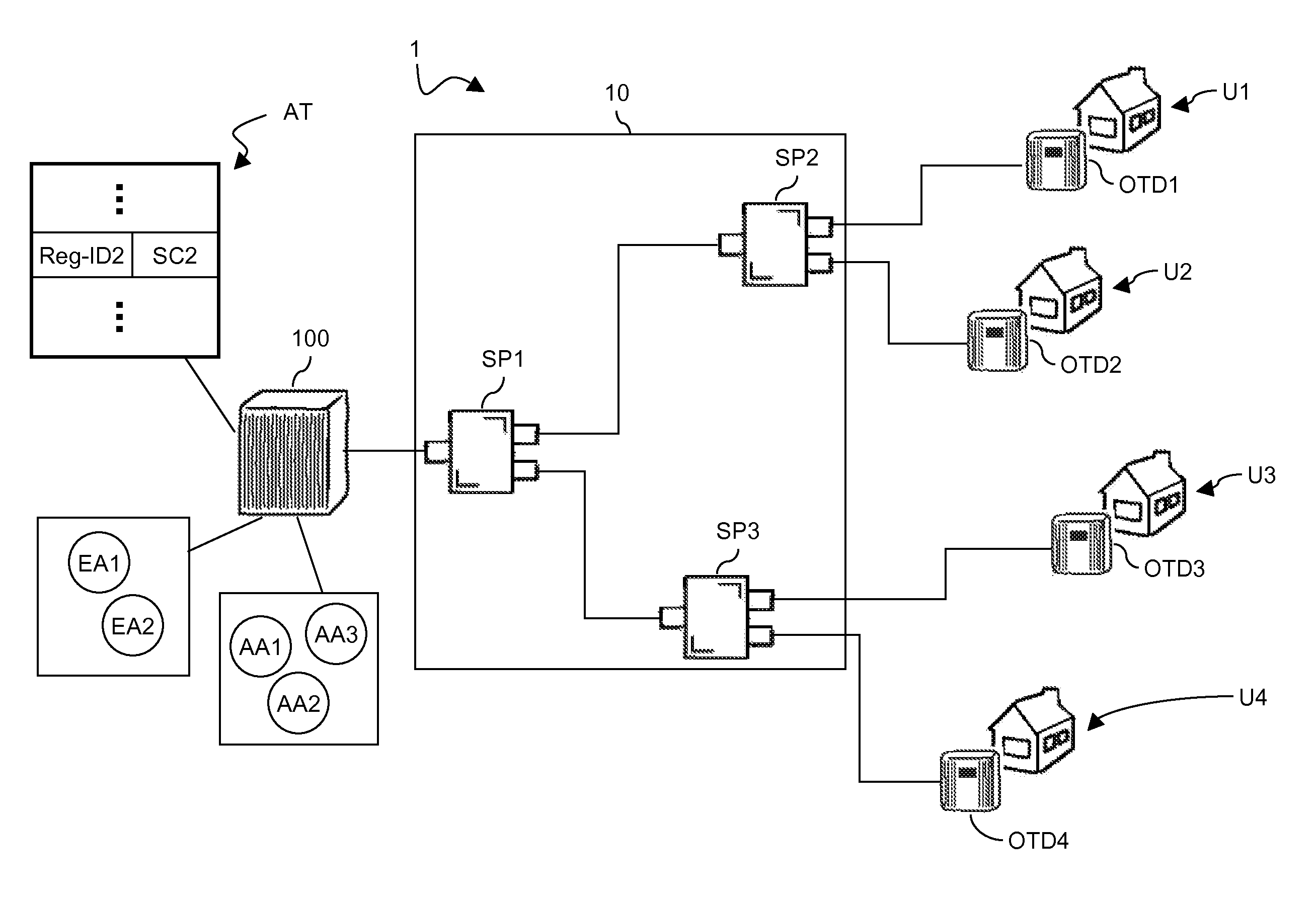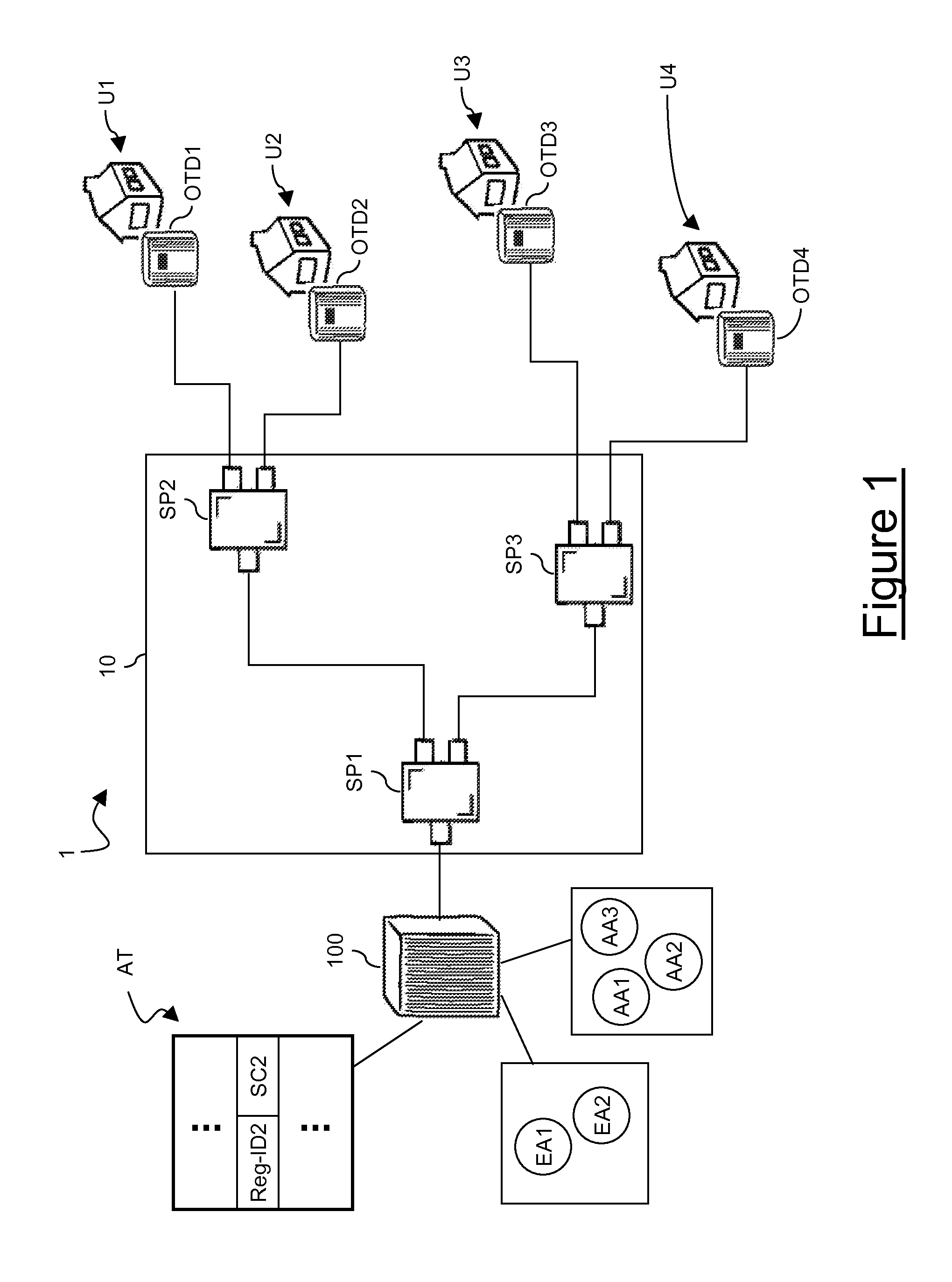Method for Increasing Security in a Passive Optical Network
a passive optical network and security technology, applied in the field of optical access networks, to achieve the effect of very low cost of authentication procedures
- Summary
- Abstract
- Description
- Claims
- Application Information
AI Technical Summary
Benefits of technology
Problems solved by technology
Method used
Image
Examples
Embodiment Construction
[0148]FIG. 1 schematically shows a PON 1 that, in the exemplary embodiment herein after described, is suitable for FTTH applications. However, the PON 1 may be used for other applications, such as for instance the above mentioned FTTB and FTTC applications. The PON 1 preferably comprises an ODN 10 and an OLT 100.
[0149]Preferably, the ODN 10 comprises three optical splitters SP1, SP2 and SP3. The optical splitter SP1 has an input optical link connected to the OLT 100 and two output optical links. The optical splitter SP2 has an input optical link connected to one of the output optical links of the optical splitter SP1 and two output optical links. Similarly, the optical splitter SP3 has an input optical link connected to the other output optical link of the optical splitter SP1 and two output optical links.
[0150]The ODN 10 shown in FIG. 1 is merely exemplary. Indeed, as mentioned above, an ODN typically comprises optical links and optical splitters arranged so as to form a point-mult...
PUM
 Login to View More
Login to View More Abstract
Description
Claims
Application Information
 Login to View More
Login to View More - R&D
- Intellectual Property
- Life Sciences
- Materials
- Tech Scout
- Unparalleled Data Quality
- Higher Quality Content
- 60% Fewer Hallucinations
Browse by: Latest US Patents, China's latest patents, Technical Efficacy Thesaurus, Application Domain, Technology Topic, Popular Technical Reports.
© 2025 PatSnap. All rights reserved.Legal|Privacy policy|Modern Slavery Act Transparency Statement|Sitemap|About US| Contact US: help@patsnap.com



